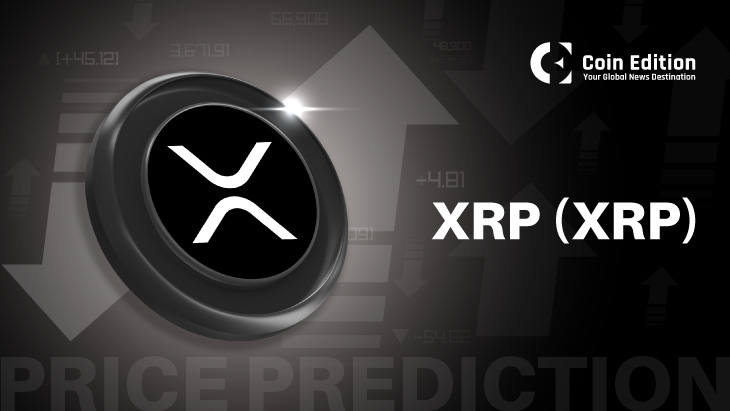XRP Price: A Comprehensive Analysis

Introduction to XRP
XRP is a digital asset created by Ripple Labs. It stands out in the cryptocurrency space due to its unique technology and use – cases. Unlike Bitcoin, which is mainly seen as a store of value and a medium of exchange, XRP is designed for fast and low – cost international money transfers. Ripple aims to revolutionize the traditional banking system by providing a more efficient alternative for cross – border payments. The xrp price is influenced by a variety of factors, and understanding these can help investors and enthusiasts make informed decisions.
Historical Price Trends
The history of XRP’s price is a roller – coaster ride. In its early days, XRP had a relatively low price, often trading for fractions of a cent. However, in late 2017 and early 2018, the cryptocurrency market experienced a massive bull run, and XRP was no exception. Its price soared from around $0.20 at the start of December 2017 to an all – time high of nearly $3.84 in January 2018. This meteoric rise was driven by the overall hype in the cryptocurrency market, as well as increased interest in Ripple’s technology and partnerships with major financial institutions.
After the peak, the market entered a bear phase, and XRP’s price started to decline. It dropped significantly over the next few years, reaching lows of around $0.10 in late 2018 and early 2019. The price continued to be volatile in the following years, with periods of small rallies followed by sharp drops.
Factors Influencing XRP Price
Market Sentiment
The overall sentiment in the cryptocurrency market plays a crucial role in determining XRP’s price. When investors are optimistic about the future of cryptocurrencies, they are more likely to buy XRP, driving up its price. Conversely, during times of market fear and uncertainty, such as regulatory crackdowns or major security breaches in the industry, the price of XRP can plummet. For example, negative news about cryptocurrency regulations in major economies can lead to a sell – off of XRP and other digital assets.
Ripple’s Partnerships and Developments
Ripple’s partnerships with banks and financial institutions are a major factor in XRP’s price. When Ripple announces new partnerships, it signals increased adoption of its technology, which can boost the demand for XRP. For instance, if a large international bank starts using Ripple’s payment protocol that utilizes XRP, it can lead to an increase in the token’s price. Additionally, technological developments, such as improvements in the Ripple network’s scalability and security, can also have a positive impact on XRP’s price.
Regulatory Environment
The regulatory environment for cryptocurrencies is constantly evolving, and it has a significant impact on XRP’s price. In the United States, the Securities and Exchange Commission (SEC) filed a lawsuit against Ripple Labs in December 2020, alleging that XRP was an unregistered security. This lawsuit led to a sharp decline in XRP’s price as many cryptocurrency exchanges delisted the token. The outcome of this lawsuit is still pending, and a favorable ruling for Ripple could potentially lead to a significant price increase, while an unfavorable one could further depress the price.
Comparison with Other Cryptocurrencies
When comparing XRP with other major cryptocurrencies like Bitcoin and Ethereum, there are several differences. Bitcoin is often considered the gold standard of the cryptocurrency world, with a large market capitalization and a strong brand. Ethereum, on the other hand, is known for its smart contract capabilities and has a large developer community.
XRP’s main advantage lies in its speed and low transaction costs. It can settle transactions in seconds, compared to Bitcoin’s and Ethereum’s longer confirmation times. However, XRP has faced more regulatory scrutiny compared to Bitcoin and Ethereum. This has limited its adoption in some regions and has also affected its price performance relative to its peers.
Future Outlook
The future of XRP’s price is highly uncertain. If Ripple wins the SEC lawsuit, it could open the door for increased adoption of XRP in the financial industry. This could lead to a significant increase in demand and a corresponding rise in price. On the other hand, if Ripple loses the lawsuit, it could face more regulatory hurdles, which could further suppress its price.
Technological advancements in the Ripple network, such as the implementation of new features and improvements in scalability, could also drive the price up. Additionally, the overall growth of the cryptocurrency market and increased acceptance of digital assets by the mainstream financial sector could have a positive impact on XRP’s price. However, the cryptocurrency market is highly volatile, and unforeseen events, such as global economic crises or major technological failures, could also lead to a decline in XRP’s price.
In conclusion, the price of XRP is influenced by a complex web of factors, including market sentiment, Ripple’s partnerships, regulatory environment, and competition from other cryptocurrencies. Investors and enthusiasts need to closely monitor these factors to make informed decisions about XRP.
